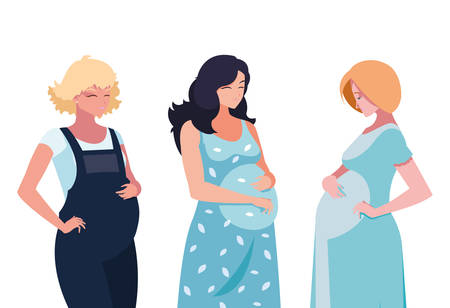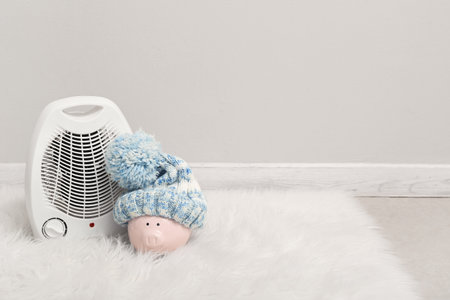Introduction to Co-Sleeping in the UK
Co-sleeping, defined as parents and their infant or child sharing the same sleeping surface, is a practice that has garnered significant attention in British households. In the UK, co-sleeping can take various forms, including bed-sharing and room-sharing, and is often influenced by cultural background, parenting style, and familial needs. Recent data suggest that a substantial proportion of families engage in some form of co-sleeping during their childs early years, whether for convenience, bonding, or breastfeeding support. Despite its prevalence, authoritative bodies such as the NHS and leading child safety organisations maintain a cautious stance due to potential risks associated with sudden infant death syndrome (SIDS) and accidental injury. Current NHS guidance advises against bed-sharing, particularly in certain circumstances such as parental smoking, alcohol consumption, or extreme fatigue. Instead, safe sleep recommendations focus on placing babies to sleep on their backs in a separate cot within the parents room for at least the first six months. This nuanced landscape of co-sleeping practices sets the stage for understanding the legal and insurance implications unique to UK homes.
Legal Framework and Parental Responsibility
In the United Kingdom, the legal landscape surrounding co-sleeping is shaped by a combination of statutory law, Child Protection policies, and the overarching principle of parental responsibility. While there is no specific statute that outright bans co-sleeping, several legislative instruments and safeguarding guidelines have direct implications for parents who choose this sleep arrangement.
Relevant UK Laws
The Children Act 1989 serves as the cornerstone of child welfare in England and Wales, placing a duty on parents to ensure their child’s safety and well-being. In Scotland, the Children (Scotland) Act 1995 provides similar provisions. These Acts emphasise a childs right to protection from harm, and authorities may intervene if any practice—including co-sleeping—is deemed to pose a significant risk to a childs health or safety.
| Legislation | Key Points | Application to Co-Sleeping |
|---|---|---|
| Children Act 1989 (England & Wales) | Parental duty to protect children; Local Authority intervention if harm suspected | Co-sleeping may be scrutinised if associated with risk factors such as substance misuse or unsafe environments |
| Children (Scotland) Act 1995 | Focuses on parental responsibilities and child safety | Similar approach to assessing risk in sleep arrangements |
| Working Together to Safeguard Children (Statutory Guidance) | Multi-agency approach to child protection | Health professionals are required to advise parents about safe sleeping practices during home visits or assessments |
The Role of Child Protection Policies
NHS guidelines and local safeguarding boards issue clear advice on infant sleep safety, often recommending that babies sleep in their own cot within the parents’ room for the first six months. If co-sleeping occurs in circumstances where additional risks are present—such as parental smoking, alcohol consumption, or drug use—this can trigger concerns under child protection protocols. Health visitors and social workers are mandated to assess sleeping arrangements as part of routine safeguarding assessments.
Parental Responsibility and Decision-Making
UK law recognises the autonomy of parents to make decisions regarding their child’s upbringing, provided those decisions do not place the child at unacceptable risk. Parental responsibility encompasses the right and obligation to make choices about where and how a child sleeps. However, should a co-sleeping arrangement contribute to an incident or injury, questions may arise regarding negligence or failure to provide adequate care under existing statutes.
Summary Table: Legal Considerations for Co-Sleeping in the UK
| Aspect | Description | Implications for Parents |
|---|---|---|
| Statutory Law | No explicit ban on co-sleeping but general duties under child protection legislation apply | Parents must weigh benefits against known risks; legal scrutiny increases if adverse events occur |
| Safeguarding Policies | NHS and local authority guidance on safe sleeping environments for infants | Lack of compliance with guidance may be questioned during safeguarding reviews or investigations |
| Parental Autonomy vs. Responsibility | Right to decide sleep arrangements balanced by duty to prevent foreseeable harm | Poor decision-making leading to harm could result in intervention or liability claims |
This legal framework underscores the importance of informed decision-making for parents considering co-sleeping in UK homes. Understanding both statutory duties and best practice guidelines is essential for safeguarding children while respecting family autonomy.

3. Safeguarding and Social Care Considerations
From the perspective of UK social services, co-sleeping is a complex issue that intersects with safeguarding protocols and child protection frameworks. Local authorities and children’s social care teams are tasked with prioritising the welfare of every child, and co-sleeping practices—particularly with infants—are often scrutinised under risk assessment procedures. In instances where health visitors, midwives, or other professionals become aware of co-sleeping arrangements, especially in families already known to social services, a formal risk assessment may be triggered. These assessments consider several factors: parental awareness of safe sleep guidance, substance use (such as alcohol or drugs), mental health status, and environmental conditions such as overcrowding or inadequate bedding.
The threshold for intervention varies across local authorities but generally hinges on whether co-sleeping is deemed to present a significant risk of harm. If parents are found to be co-sleeping in high-risk circumstances—such as sofa-sharing or bed-sharing with newborns while under the influence—social care may escalate concerns through Child in Need (CIN) or Child Protection (CP) procedures. However, if parents demonstrate an understanding of safe sleep practices and there are no aggravating factors, social services may offer advice and support rather than formal intervention. It is important for families to engage openly with professionals and adhere to NHS and Lullaby Trust recommendations to mitigate risks and prevent escalation to statutory involvement.
4. Insurance: Home, Life, and Liability Implications
Co-sleeping, although a common practice in many UK households, can introduce unique considerations when it comes to home, life, and liability insurance. Understanding these implications is vital for families who co-sleep with their children, as insurers may assess risk differently based on household arrangements and sleeping practices.
Home Insurance Considerations
Most standard UK home insurance policies are designed to cover accidental damage and certain liabilities within the property. However, if an accident involving a child occurs during co-sleeping—such as falls from beds or suffocation incidents—insurers may scrutinise the circumstances of the claim. Failure to disclose regular co-sleeping arrangements when specifically asked could potentially invalidate a claim if the insurer deems it a material fact affecting risk assessment.
Table 1: Potential Home Insurance Issues Related to Co-Sleeping
| Scenario | Possible Insurer Response | Risk of Claim Dispute |
|---|---|---|
| Child injury during co-sleeping | Request for detailed incident report; review of policy disclosures | Moderate-High |
| Fire or theft unrelated to co-sleeping | No impact unless co-sleeping contributed to loss | Low |
| Non-disclosure of co-sleeping arrangement | Potential for claim rejection if considered material non-disclosure | High |
Life Insurance Policies and Co-Sleeping Risks
Life insurance in the UK typically covers death from natural causes or accidents, but exclusions may apply in cases where negligence is determined. Should an infant fatality occur as a result of co-sleeping, insurers might investigate whether safe sleep guidelines were followed. If policyholders are found to have disregarded NHS advice or manufacturer recommendations (for example, bed-sharing under the influence of alcohol), payout disputes could arise.
Table 2: Life Insurance Payout Scenarios Involving Co-Sleeping
| Incident Circumstance | Payout Likelihood | Insurer Investigation Focus |
|---|---|---|
| Co-sleeping following all safety guidelines | Likely payout unless other exclusions apply | Verification of adherence to best practice and advice |
| Suffocation linked to unsafe sleeping conditions (e.g., sofa sharing) | Payout at risk; potential for reduced or rejected claim | Causation analysis; contributory negligence assessment |
| Lack of disclosure about household sleeping arrangements when asked by insurer | Payout may be denied due to non-disclosure or misrepresentation | Policy application review and material fact determination |
Public Liability and Parental Responsibility Implications
If a third party’s child is injured while co-sleeping in your home—for instance, during a sleepover—your home insurance’s public liability section may be engaged. The insurer will evaluate whether reasonable care was taken to prevent foreseeable risks. Notably, if unsafe co-sleeping practices are identified, liability coverage may be limited or excluded.
Key Takeaway for Policyholders:
If you routinely co-sleep with your children in the UK, it is crucial to proactively disclose this practice to your insurers when applying for or renewing relevant policies. Familiarise yourself with your specific policy terms and seek written clarification regarding any grey areas around coverage limitations associated with co-sleeping. Taking these steps ensures you are adequately protected and minimises the likelihood of claim disputes should an unfortunate event occur.
5. Medical Advice vs Legal Risks
The issue of co-sleeping in UK homes sits at a complex intersection between medical guidance and legal or insurance liabilities. The NHS, as the principal health authority, provides clear clinical recommendations that prioritise infant safety, specifically discouraging co-sleeping with babies under six months, particularly in circumstances involving parental smoking, alcohol consumption, drug use, or excessive tiredness. These guidelines are firmly rooted in evidence linking co-sleeping to an increased risk of sudden infant death syndrome (SIDS).
Despite these well-publicised medical recommendations, the legal framework in the UK does not explicitly prohibit co-sleeping. However, there have been rare but notable cases where authorities have intervened if a child’s welfare was believed to be at risk due to unsafe sleeping practices. In extreme situations, child protection services may become involved if repeated advice is ignored and harm occurs. Such outcomes are often highly publicised and can lead to significant stress for families.
Insurance considerations add another layer of complexity. Home insurance policies in the UK typically do not specifically address co-sleeping. However, should a serious incident occur—such as injury or fatality resulting from bed-sharing—insurance companies may scrutinise whether parents followed best practice guidelines. Failure to adhere to NHS advice could potentially affect liability or claims relating to accidental death or injury within the home, as insurers may argue contributory negligence.
This contrast between clinical guidance and legal/insurance frameworks places parents in a challenging position. While NHS advice is designed to minimise health risks and promote optimal infant wellbeing, it is not legally binding. Nonetheless, disregarding professional recommendations could have indirect legal ramifications or impact insurance claims if a negative outcome arises from co-sleeping.
Ultimately, parents must carefully weigh the authoritative medical advice against the potential legal and financial consequences of their choices. Open discussions with healthcare professionals and a thorough understanding of both clinical guidelines and household insurance terms are essential for making informed decisions regarding sleep arrangements for infants in UK homes.
6. Best Practice Recommendations for UK Families
For families in the UK considering or currently practising co-sleeping, it is essential to adopt a balanced approach that prioritises child safety, legal compliance, and appropriate insurance coverage. The following practical, medically-informed recommendations are designed to minimise risk and ensure both legal and insurance requirements are met.
Understanding Your Legal Responsibilities
UK parents must be aware that while co-sleeping itself is not illegal, any harm resulting from unsafe sleeping arrangements may have serious legal consequences under child protection laws. To remain compliant, always follow NHS guidelines on safe sleep and ensure that your sleeping environment does not pose avoidable risks such as overheating, entrapment, or suffocation. Parents should also avoid co-sleeping if they have consumed alcohol, drugs, or are extremely fatigued, as these factors significantly increase risk and could be considered negligence in the event of an incident.
Insurance Considerations
It is advisable to review your home and contents insurance policy to determine if co-sleeping or related incidents could impact your cover. Some policies may require notification if you regularly co-sleep with your child, especially if it increases perceived risk. Ensure you disclose accurate information to your insurer to avoid potential claim denials. If unsure, consult with your insurance provider or seek independent advice from a broker familiar with family policies in the UK.
Safe Co-Sleeping Practices
- Always place your baby on their back to sleep, on a firm mattress free from pillows, heavy duvets, or loose bedding.
- Ensure there are no gaps between the bed and wall where a baby could become trapped.
- If one parent smokes (even outside), it is advised not to co-sleep due to increased SIDS risk.
- Avoid sofas or armchairs for co-sleeping as these environments pose significantly higher risks of suffocation or falls.
Documentation and Record-Keeping
If you share custody or are involved in family court proceedings, document your adherence to safe sleeping guidance. This can demonstrate responsible parenting should legal questions arise. Maintain records of communication with healthcare professionals regarding co-sleeping decisions and follow their advice closely.
Consult Healthcare Professionals
If you have concerns about co-sleeping—especially if your baby was premature, has low birth weight, or you have specific health conditions—seek advice from your GP or health visitor. They can provide tailored recommendations and support you in creating a safer sleep environment for your family.
By following these best practice recommendations, UK families can help safeguard their children’s wellbeing while ensuring compliance with legal standards and maintaining adequate insurance protection against unforeseen events.


